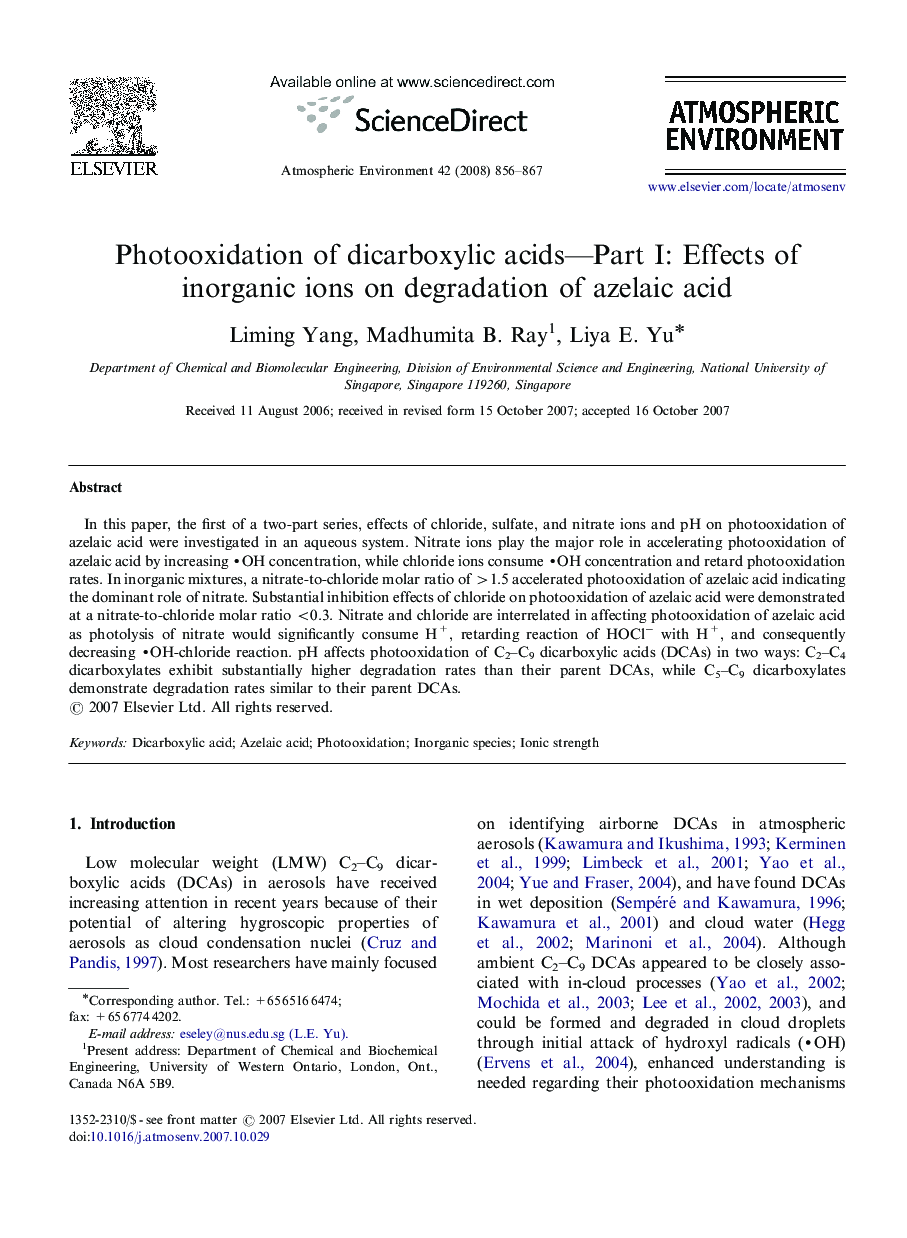| Article ID | Journal | Published Year | Pages | File Type |
|---|---|---|---|---|
| 4443171 | Atmospheric Environment | 2008 | 12 Pages |
In this paper, the first of a two-part series, effects of chloride, sulfate, and nitrate ions and pH on photooxidation of azelaic acid were investigated in an aqueous system. Nitrate ions play the major role in accelerating photooxidation of azelaic acid by increasing OH concentration, while chloride ions consume OH concentration and retard photooxidation rates. In inorganic mixtures, a nitrate-to-chloride molar ratio of >1.5 accelerated photooxidation of azelaic acid indicating the dominant role of nitrate. Substantial inhibition effects of chloride on photooxidation of azelaic acid were demonstrated at a nitrate-to-chloride molar ratio <0.3. Nitrate and chloride are interrelated in affecting photooxidation of azelaic acid as photolysis of nitrate would significantly consume H+, retarding reaction of HOCl− with H+, and consequently decreasing OH-chloride reaction. pH affects photooxidation of C2–C9 dicarboxylic acids (DCAs) in two ways: C2–C4 dicarboxylates exhibit substantially higher degradation rates than their parent DCAs, while C5–C9 dicarboxylates demonstrate degradation rates similar to their parent DCAs.
